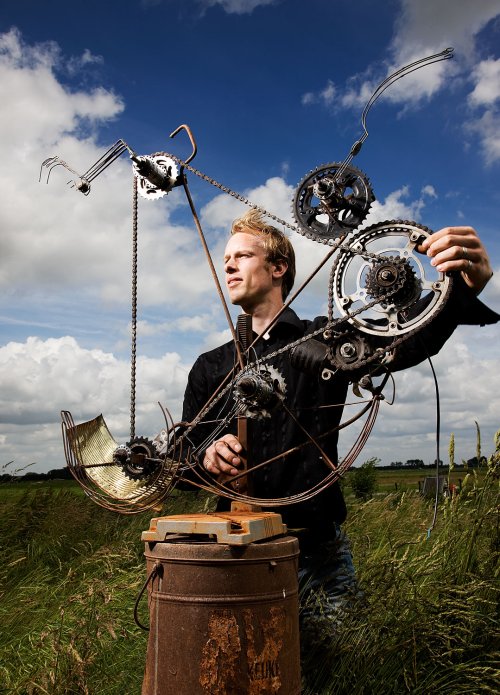Taaie Tiller Kinematic Model - 2007

The Watt-mechanism
The kinematics of this machine are based on the well-known mechanism that James Watt used for his major improvement of the steam engine. This 'double-rocker linkage' therefore is named 'The Watt-mechanism'. The speciality of this mechanism is that it has a point in the middle, at about the location of the rock, that moves on an approximate straight line for a large range of motion. For James Watt this was important for guiding the piston of the steam engine along a straight line. For the Sisyphus-machine however, another feature is more important: the flipping of the grasping link. When the mechanism reaches the top, the grasping link (the coupler) becomes in line with one of the crane (rocker) links. Instantanuously, the mechanisms then gains an additional (second) degree of freedom. In most engineering designs these 'singularities' are problematic since they are not controllable. For the Sisyphus-machine however this feature is used in advantage. The complete mechanism is force-driven by the mass of the containers at each side. These masses act as two co-operating actuators that combine their forces during the cycle and are able to do the flipping of the grasping link.

